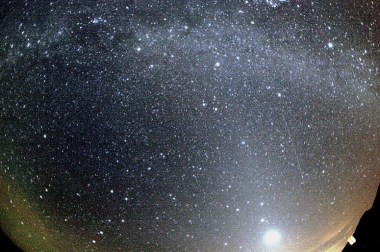Orionid meteor shower 2013: Peak time, how to get the best view

The Orionid meteor shower will still be visible tonight, even though it peaked early on the morning of October 21 between 2 a.m. to 5 a.m.
This year's Orionid meteor shower will be difficult to view because the moon will be in a bright part of its cycle during the shower's peak. Up to 20-25 meteors originating out of the constellation of Orion the Hunter can be seen at its peak.
Although the bright moonlight may obscure the Orionid shower's peak tonight, the shower will continue on until late October and early November and stargazers can still catch a glimpse of a few fireballs after tonight. For the best view, be sure to travel away from city lights and look up at the sky.
The Orionid meteor shower is one of two meteor showers caused by Halley's Comet, after the Eta Aquarids, which occurred in April/May this year.
This year's Eta Aquarid meteor shower peaked in May.
The Orionids were named because they appear to come from the constellation Orion. The radiant of the Orionids is located between the constellations Orion and Gemini.
Although the meteor shower will be peaking late into the night, you can start looking out for the meteors from 11 p.m. tonight.
A live stream of the meteor shower can be seen on the Slooh Space Camera website.











